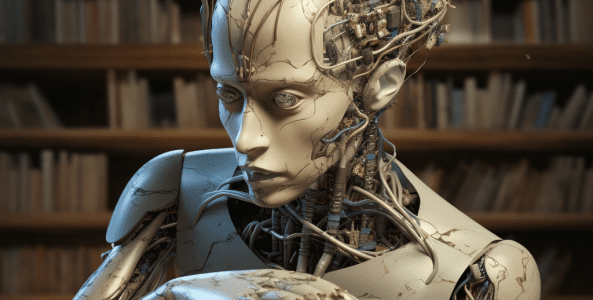Introduction
The combination of Artificial Intelligence (AI) and the transmission of knowledge, particularly through Oral Tradition, has opened up a new realm of inquiry into the nature of human communications and cultural development. In this brief review, we will explore the complex relationships between ChatGPT technology and Oral Tradition, exploring their shared characteristics as repositories of collective memory and sources of cultural continuity.
Defining Oral Tradition
Oral Tradition is a form of cultural transmission that was practiced for thousands of years. It is characterized by a wide range of stories, myths, and practices that were transmitted orally from generation to generation. Oral Tradition is rooted in the ancient history of human society and is characterized by its reliance on communal storytelling as a means of creating a sense of identity and cultural unity. The lack of a written source in this tradition emphasizes the importance of memory and the collective preservation of knowledge.
ChatGPT as a Modern Repository of Collective Memory
ChatGPT, on the other hand, appears as a modern embodiment of collective memory, the result of cutting-edge Artificial Intelligence. Instinctively trained on a vast dataset of various linguistic expressions, cultural subtleties, and historical context, ChatGPT embodies the wisdom of human communication, analogous to Oral Tradition in its capacity as a storage medium, albeit within the context of machine intelligence.
Similarities
1. Dynamic Knowledge Transmission:
The transmission of knowledge is a dynamic process both in ChatGPT and in Oral Tradition. Oral Tradition was capable of adapting to cultural changes, as it was able to absorb and assimilate new narratives and interpretations. ChatGPT, on the other hand, has a wide temporal range of training data, which allows it to adapt to linguistic changes, technological developments, and social changes.
2. Communal Participation:
The communal nature of the two is a key distinguishing factor between the two. Oral Tradition is characterized by the active involvement of members of a community in preserving and disseminating stories. ChatGPT is a technological construct, but it is based on the collective contribution of users, who refine their responses through ongoing interaction, embodying the communal character of traditional storytelling.
3. Adaptation to Context:
The adaptive capacity of both entities is remarkable. Oral Tradition adapted its stories to the context of a community’s culture, society, and history. Similarly, the responses of ChatGPT are informed by the context given by users, demonstrating an adaptive capacity similar to that of oral narratives.
4. Preservation of Cultural Identity:
Oral Tradition is a form of cultural identity preservation that preserves a community’s unique history and values through its stories. ChatGPT’s vast dataset contains linguistic details, idioms, and cultural references that help to preserve a variety of cultural identities in the digital world.
Exploring the Depth of Parallels
Beyond these superficial similarities, memory plays a central role in comprehending ChatGPT’s relationship to Oral Tradition. Whereas Oral Tradition is based on the cognitive capacities of individuals to recall and convey stories, while ChatGPT uses sophisticated algorithms to analyze and create language, it is a representation of machine memory.
In Oral Tradition, storytellers’ mnemonic skills ensured the continuity of stories across generations. Likewise, ChatGPT’s capacity to recall and assimilate information reflects a type of machine memory, although it is not based on subjective experiences. The parallelism between human memory and machine memory in Oral Tradition and ChatGPT invites reflection on the changing nature of knowledge retention.
Challenges and Ethical Considerations
As we parallelize ChatGPT with Oral Tradition, it is essential to confront the unique challenges posed by Artificial Intelligence. In contrast to Oral Tradition, where stories are embedded in cultural environments, ChatGPT works in a digital environment with the potential for misinterpretation and distortion. Consequently, ethical considerations surrounding the responsible utilization of AI technology must be paramount to ensure that the conservation of collective memory conforms to principles of accuracy, equity, and cultural sensitivity.
Conclusion
To sum up, ChatGPT’s relationship with Oral Tradition highlights the complex relationship between technology and cultural legacy. Despite their differences in origin and function, both entities work together as dynamic stores of collective memory. Recognizing these similarities not only helps to gain a more comprehensive understanding of the transformative capabilities of Artificial Intelligence but also invites critical consideration of the ethical implications of AI deployment.
As we navigate the ever-changing world of technology, recognizing these similarities promotes a dialogue that interconnects the past and present. This synthesis contributes to the richness of our collective intellectual heritage, combining insights from tradition and innovation. The tapestry of our human knowledge is one in which the thread of Oral Tradition and the thread of ChatGPT connect, weaving a narrative that encompasses the past and the present of technological progress.


